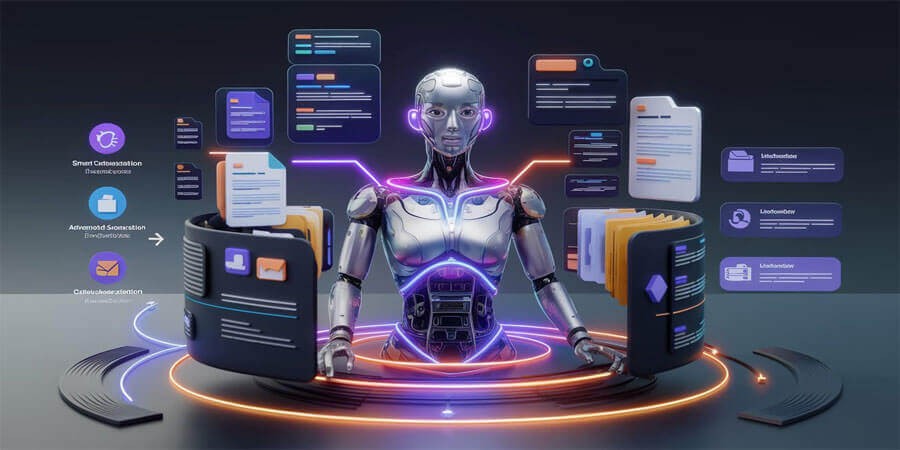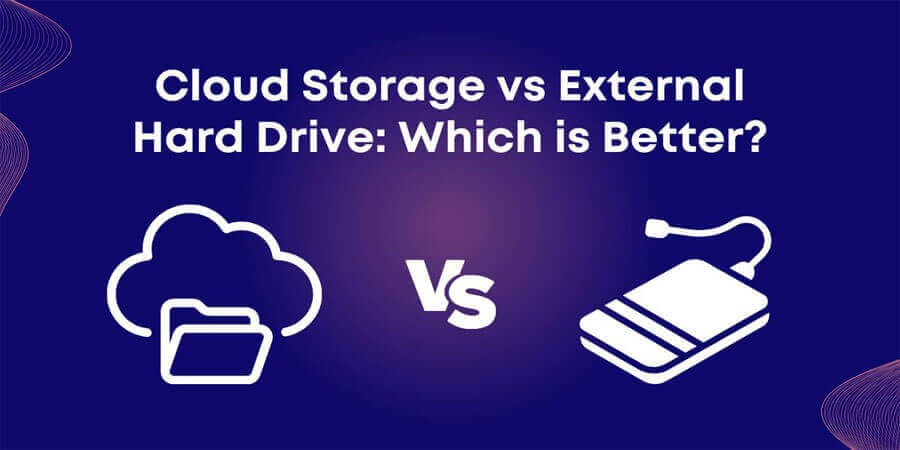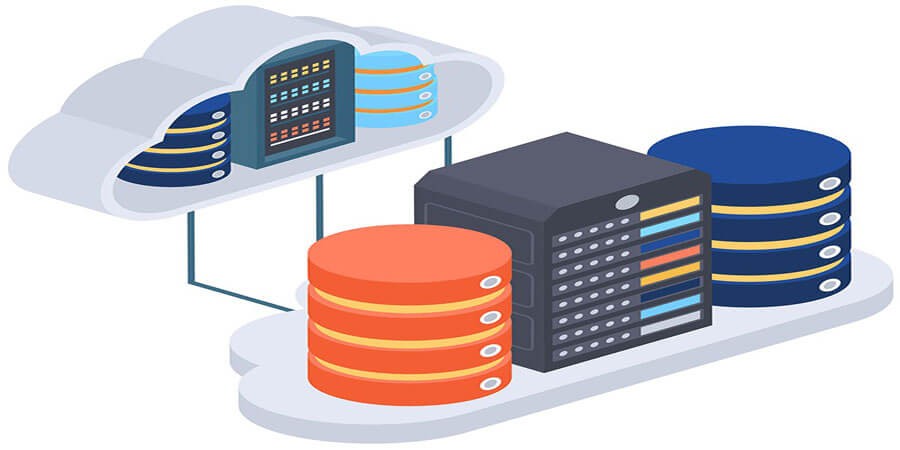

The Future of File Storage: Trends and Innovations
Introduction
As data volumes explode and technology advances, file storage continues evolving in response to growing demands for capacity, speed, security, and scalability. From distributed cloud systems to breakthroughs in storage media, emerging innovations seek to address the modern challenges of storing massive amounts of information efficiently and reliably. Whether you’re a casual user curious about what’s next in personal storage or an IT professional planning future infrastructure, understanding these trends and innovations provides insight into how you’ll store and manage files in the coming years.
This guide explores the future of file storage—covering upcoming hardware developments like DNA data storage and next-gen SSDs, as well as advanced software paradigms like distributed file systems and persistent cloud technologies. We’ll look at how these breakthroughs aim to tackle capacity, performance, durability, and cost-effectiveness, promising a radically different landscape for file storage and data management.
1. Beyond Traditional Hard Drives
1.1 HDD Plateau
-
Mechanical hard drives remain cost-effective at scale but are hitting performance ceilings. Advances revolve around higher platter densities and helium-filled drives.
-
HAMR (Heat-Assisted Magnetic Recording) and MAMR (Microwave-Assisted Magnetic Recording) can push HDD capacities beyond 20 TB.
1.2 SSD Dominance
-
NAND-based SSDs outpace HDDs in speed and reliability, though cost per GB is higher. 3D NAND layering pushes more capacity into the same space.
-
QLC (Quad-Level Cell) technology offers cheaper, higher-density SSDs at the cost of some durability.
1.3 Enterprise Rethink
-
Many data centers shift mission-critical workloads to SSD arrays or hybrid models, leaving HDD usage primarily for “cold” or archival data.
Pro Tip: Despite technological leaps, mechanical drives remain a staple for cost reasons. But as 3D NAND densities rise and enterprise invests in speed, expect SSD-based solutions to continue dominating the future of high-performance storage.
2. Cloud Storage Continues to Mature
2.1 Distributed Architectures
-
Cloud providers leverage distributed file systems like Amazon S3, Azure Blob, or Google Cloud Storage, storing data in redundant nodes across regions for high durability.
-
Lower-tier “cold storage” solutions (e.g., AWS Glacier) address archival needs at reduced cost.
2.2 Serverless & Auto-Scaling
-
Infrastructure that automatically scales capacity and throughput based on usage patterns.
-
Reduced overhead for provisioning or planning around peak loads.
2.3 Hybrid & Multi-Cloud
-
Organizations combine on-prem with multiple cloud providers, orchestrating data across diverse infrastructures for cost, compliance, or performance.
-
Tools like NetApp Cloud Volumes or VMware Tanzu unify management.
Scenario: A multinational company uses a multi-cloud approach—active data in Azure for real-time analytics, long-term cold archives in AWS Glacier, ensuring global coverage and cost efficiency.
3. Rise of Distributed and Decentralized Storage
3.1 Peer-to-Peer (P2P) Models
-
IPFS (InterPlanetary File System) and blockchain-based storages (Filecoin, Sia) offer decentralized networks where data is split and distributed among nodes.
-
The network, rather than a single provider, handles redundancy.
3.2 Potential Benefits
-
Censorship resistance, improved fault tolerance if many nodes vanish, possibly lower cost if users share spare capacity.
3.3 Challenges
-
Adoption remains niche, concerns about data availability, performance, trust, and ensuring consistent speeds.
Pro Tip: While decentralized storage garners interest for resilience and independence from big cloud providers, practical usage and performance remain evolving areas.
4. Emerging Storage Media
4.1 DNA Data Storage
-
Using synthetic DNA strands to encode digital bits. Extremely high density and longevity (thousands of years in stable conditions).
-
Still in research phases, but proof-of-concept shows potential for massive archiving in a tiny footprint.
4.2 Holographic Storage
-
Storing data in 3D patterns within photosensitive crystals or polymers. Promised high density, but commercialization is slow.
4.3 Glass Storage
-
Microsoft’s Project Silica uses laser etching in quartz glass, read by advanced optics. A long-term archival approach.
Advice: While these technologies exist mainly in labs or pilot projects, they represent the next wave of ultra-dense, ultra-durable data archival solutions.
5. Software-Defined Storage (SDS)
5.1 Decoupling Hardware from Software
-
SDS solutions abstract storage management from the underlying hardware, letting commodity drives be pooled into flexible storage resources.
-
Tools like Ceph, GlusterFS, and VMware vSAN unify nodes for scale-out.
5.2 Automated Tiering
-
SDS systems can automatically place frequently accessed “hot” data on SSD, less accessed “cold” data on HDD or tape tiers.
5.3 Scalability & Orchestration
-
SDS integrates with container platforms (Kubernetes) to dynamically provision volumes, handle replication, and ensure high availability.
Scenario: A large enterprise uses Ceph on commodity servers. As capacity demands grow, they add more nodes, automatically distributing data across the cluster.
6. Edge Storage and Fog Computing
6.1 Data Gravity
-
With IoT devices generating massive data at the edge (factories, vehicles, remote sensors), it’s not always feasible to send all data to a central cloud.
6.2 Edge Storage
-
Deploying miniature storage clusters or micro data centers near the data source to handle real-time analytics, reduce latency.
-
Then only critical or aggregated data is pushed to the cloud.
6.3 Fog Architecture
-
A distributed approach bridging the edge and central cloud. Data flows seamlessly between nodes.
Pro Tip: As IoT expands, localized or edge-based storage grows, balancing bandwidth constraints and real-time decision-making.
7. Quantum Storage Prospects
7.1 Quantum Memory
-
Research into storing quantum states (qubits) for extended periods. Possibly unlocking new cryptographic or computational capabilities.
-
Still at a very experimental stage.
7.2 Challenges
-
Fragile qubits, short coherence times. Real-world data storage applications remain far off.
Advice: Near-future quantum breakthroughs likely revolve around computing, not stable long-term file storage. But watch the space for potential synergy.
8. AI and Intelligent File Systems
8.1 Automated Classification
-
AI-driven indexing can auto-tag or categorize files based on content (images, text, etc.). Minimizes manual folder sorting.
-
Could lead to “search-based” file access instead of strict folder hierarchies.
8.2 Predictive Caching
-
Machine learning models predict which files you’ll likely use soon, caching them on faster media.
8.3 Anomaly Detection
-
Spot suspicious file operations that differ from typical usage patterns, aiding security.
Scenario: A creative agency’s file system uses AI-based tagging for images, letting them quickly find “beach sunrise shots” or “urban architecture,” no manual labeling needed.
9. Security Enhancements
9.1 End-to-End Encryption by Default
-
As data breaches intensify, solutions are adopting zero-knowledge or hardware-based encryption as standard.
-
Minimizes trust in the platform or admins.
9.2 Confidential Computing
-
Data encrypted even during processing, thanks to secure enclaves (Intel SGX, AMD SEV). Potentially extends to file storage operations.
9.3 Immutable Snapshots
-
Future file systems might rely heavily on WORM (Write Once Read Many) approaches or tamperproof logs, aiding cybersecurity.
Pro Tip: Ransomware defenses increasingly revolve around snapshot-based file systems with read-only or offline volumes.
10. Lighter Footprint and Green Storage
10.1 Energy Efficiency
-
As data centers expand, power consumption becomes a pressing issue. Modern drives use advanced spin-down states, or partial read/write intensities.
10.2 Eco-Focused Manufacturing
-
Some vendors move to recycled materials, helium-filled drives (less friction), or more biodegradable packaging.
10.3 Tiered, Intelligent Offloading
-
The system automatically migrates rarely used data to lower-power storage or offline tapes, reducing electricity usage.
Scenario: A large-scale hosting provider invests in new HDD designs that spin at reduced RPM when idle, cutting total data center power usage by 20%.
11. APIs and Developer-Focused Storage Solutions
11.1 Object Storage
-
S3-compatible APIs standardize how apps read/write data. Key-based retrieval vs. classic file paths.
-
Highly scalable for cloud-native, microservices.
11.2 Container-Oriented Storage
-
Kubernetes volumes that seamlessly scale or replicate across nodes. DevOps teams can dynamically provision storage for ephemeral containers.
11.3 Data Lakes
-
Unstructured raw data stored at scale (AWS Lake Formation, Azure Data Lake) with metadata layers for flexible analytics.
Pro Tip: The future leans heavily towards object-based methods for distributed, large-scale data, overshadowing older block or file protocols in certain cloud use cases.
12. AR/VR and 3D Asset Storage
12.1 3D/VR Content
-
The rise of AR/VR and metaverse concepts requires specialized file formats. They can be huge, incorporating geometry, textures, interactive elements.
12.2 Real-Time Streaming
-
Partial or progressive loading of 3D scenes to reduce initial wait.
-
High-performance servers to quickly serve assets.
12.3 Next-Gen Protocols
-
Potential new approaches to storing 3D worlds, from blockchain-based ownership to advanced streaming protocols.
Scenario: A VR game developer invests in an advanced content delivery network, streaming environment data on-demand. Storage must handle massive 3D asset libraries.
13. Next-Level Redundancy and Erasure Coding
13.1 Erasure Coding
-
Splits data into fragments, expands them with parity blocks. If a fragment is lost, data is reconstructable.
-
More space-efficient than simple replication (like RAID 1/2/3). Widely used in large object stores.
13.2 Advanced RAID-Like Solutions
-
RAID is evolving to handle multi-terabyte drives where rebuild times are huge. ZFS or Btrfs incorporate checksums and self-healing.
13.3 Geographic Distribution
-
Splitting data across regions for resilience. Even if an entire data center is lost, partial fragments suffice to reconstruct.
Advice: HPC or enterprise might adopt sophisticated erasure coding for robust, cost-efficient reliability. This trickles down to general solutions over time.
14. Human-Centric File Management
14.1 Search-Driven Paradigms
-
Future file systems might revolve around universal search and auto-tagging, less about manual folder structures.
-
AI-driven content detection organizes data by content type or project.
14.2 Rich Previews
-
Systems show file context or embedded media previews, letting users quickly grasp content without opening.
14.3 Natural Language Queries
-
“Find the invoice from March 2024 about Project Phoenix.” Next-gen file systems parse queries semantically.
Scenario: A knowledge worker simply types a natural query, and the system returns relevant documents, images, or code snippets from a distributed store.
15. Convergence of Backup and Archive
15.1 Continuous Versioning
-
Merging ephemeral backups with indefinite archiving, letting users keep older versions for compliance or historical referencing.
15.2 Intelligent Lifecycle
-
Files automatically move from “active” to “cool” to “archive” tiers, ensuring cost-effectiveness.
15.3 Self-Healing
-
Future storages might sense data corruption early, automatically re-downloading or rebuilding from other copies.
Pro Tip: Already we see solutions like Backblaze’s B2 integrate seamlessly with NAS systems. Over time, expect further synergy, simplifying backup vs. archive decisions.
16. Containerized and Microservice Storage
16.1 Ephemeral Volumes
-
Docker containers spinning up short-term volumes. Data persists in external, robust volumes or object stores.
16.2 Orchestrated Storage
-
Kubernetes with CSI (Container Storage Interface) dynamically provisions volumes, scaling them or migrating them across clusters.
16.3 DevOps Integration
-
Storage integrated into CI/CD pipelines, automatically versioning environment config, data seeds, etc.
Scenario: A microservice architecture uses ephemeral containers but persistent volumes from a scale-out distributed file system. If a container dies, the volume reattaches to a new instance.
17. The Impact of AI on File Storage
17.1 Predictive Maintenance
-
AI models analyzing drive SMART data, usage patterns to anticipate drive failures, preemptively migrating data.
17.2 Auto-Tagging & Classification
-
Systems scan images or text, auto-labelling them for easy retrieval.
17.3 Security Intelligence
-
Identifying suspicious file access patterns or potential exfiltration attempts in real-time.
Advice: As data grows unwieldy, AI-based classification and management become vital for effectively leveraging stored content.
18. Conclusion
The future of file storage is poised to be more distributed, more intelligent, and far more resilient. From breakthroughs in DNA and holographic media to the widespread adoption of object-based, cloud-scale architectures, we’re seeing storage solutions that tackle capacity, performance, and security in fresh ways. Innovations in zero-knowledge encryption and erasure coding ensure data integrity and privacy, while AI-driven classification and search promise a simpler, more intuitive user experience.
As the world’s data expands exponentially, the emphasis on sustainability and minimal energy footprints grows too, pushing green storage technologies and edge/fog architectures to handle localized data surges. Meanwhile, emerging phenomena like AR/VR content, quantum experiments, and 3D asset streaming will shape novel demands on file systems—requiring advanced streaming, partial loading, and robust distribution.
At its heart, these trends and innovations underscore a shift from plain hierarchical file systems to a dynamic landscape of cloud-driven, distributed, and sometimes decentralized storage solutions—emphasizing security, reliability, and ease of collaboration. By staying informed and adopting relevant strategies early, individuals and organizations can ensure they’re prepared for tomorrow’s data complexities, harnessing new file storage possibilities rather than being overwhelmed by them.
Popular articles




Comments (0)